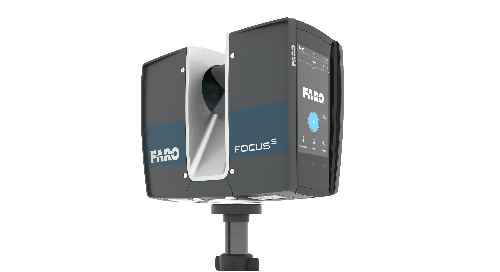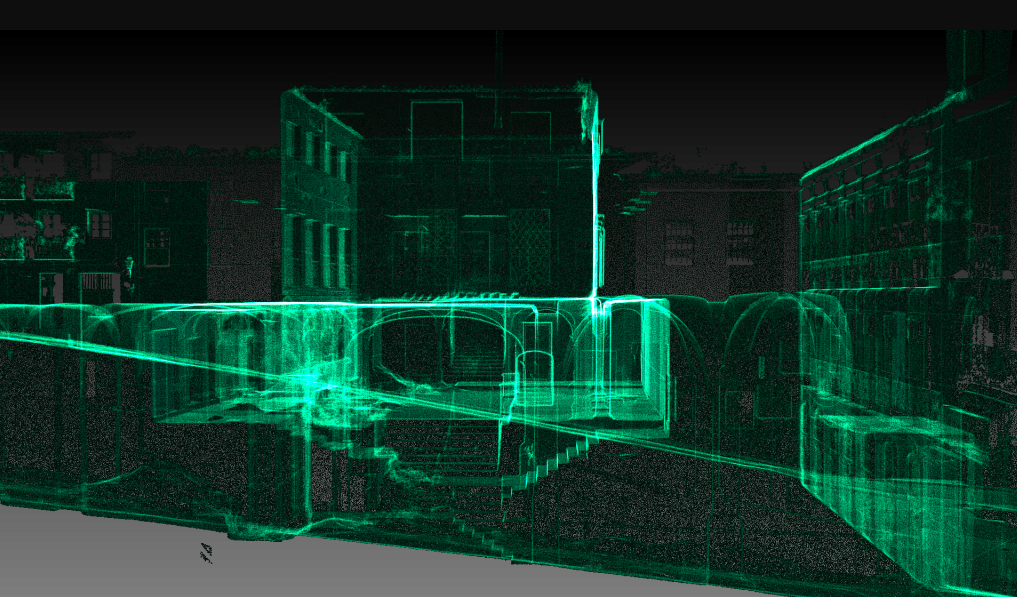How 3D Scanning Speeds Up the Design Phase
Wiki Article
Just How 3D Laser Scanning Reinvents Architectural Style and Construction Projects
3D laser scanning is changing the landscape of building design and building. This technology uses unequaled accuracy in capturing existing settings, which facilitates far better project planning and execution. It decreases errors while boosting efficiency in numerous phases of development. The ramifications for cooperation amongst architects, engineers, and other stakeholders are substantial. These advancements open the door to new layout opportunities and innovative solutions. What lies ahead for this progressing modern technology?The Principles of 3D Laser Scanning Modern Technology
3D laser scanning innovation might appear facility, its core concepts are straightforward and transformative for building layout. This technology employs laser light beams to record specific measurements of physical structures, creating a detailed point cloud that stands for the scanned setting. A laser scanner produces rapid pulses of light, measuring the moment it considers the light to return, which permits for the estimation of distances with amazing accuracy.The resulting point cloud can be exchanged a 3D version, providing engineers with very useful aesthetic information. This model enables experts to manipulate and evaluate design components within their tasks, permitting cutting-edge services and enhanced visualization. By utilizing 3D laser scanning, architects can much better comprehend the status quo of a site, guaranteeing that brand-new layouts balance with their surroundings. This assimilation of innovation into building style marks a considerable development, fostering creative thinking and precision in the field.

Enhancing Accuracy and Efficiency in Architectural Projects
As building jobs progressively demand accuracy and speed, 3D laser scanning emerges as a pivotal device in boosting both precision and performance. This innovation records numerous data factors in a short timeframe, creating comprehensive and precise 3D versions of existing structures. The capacity to acquire accurate measurements decreases the threat of errors during the layout stage, permitting designers to picture their projects with unmatched clarity.Moreover, the quick data collection procedure lessens the time spent on-site, enabling groups to concentrate on analysis and design enhancements. With real-time information accessibility, modifications can be made quickly, promoting a more streamlined workflow. The integration of 3D laser scanning into architectural practices not just enhances measurement accuracy but also boosts the overall task timeline, assisting in quicker decision-making. In a sector where accuracy is important, this innovation stands as a transformative force, elevating the criteria of architectural style and construction tasks.
Simplifying Collaboration Amongst Stakeholders
While conventional architectural procedures commonly include fragmented communication amongst stakeholders, 3D laser scanning cultivates a much more natural joint atmosphere. By supplying accurate, high-resolution information, this technology permits architects, customers, contractors, and engineers to run from a unified point of referral. The comprehensive visualizations produced via laser scanning eliminate misinterpretations and uncertainties, ensuring that all celebrations have accessibility to the very same information.This transparency boosts decision-making and motivates prompt feedback, as stakeholders can quickly visualize style elements and spatial relationships. In enhancement, the assimilation of 3D scanning information into Building Details Modeling (BIM) systems even more improves partnership, permitting for real-time updates and alterations. Such smooth communication not only decreases conflicts yet likewise speeds up job timelines, as all stakeholders stay aligned throughout the layout and building phases. Eventually, 3D laser scanning transforms conventional operations right into an extra collaborative and effective procedure, benefiting all events involved.
Opening Creative Possibilities in Style
By allowing designers to visualize complicated intricate information and spatial partnerships, 3D laser scanning exposes creative opportunities in layout. This innovation enables exact mapping of existing settings, enabling engineers to explore cutting-edge ideas that could have previously seemed impractical. With very precise data, developers can trying out unique forms and materials, pushing the borders of traditional design.The combination of 3D laser scanning right into the layout process promotes partnership among multidisciplinary teams, encouraging the exchange of ideas and enhancing creative thinking. The thorough visualizations produced by this technology not just help in recognizing prospective style difficulties but also motivate solutions that may not have been considered. Therefore, engineers can develop much more appealing and vibrant areas that resonate with customers while fulfilling practical demands. Eventually, 3D laser scanning transforms the architectural landscape, empowering designers to understand their visions with unmatched accuracy and imagination.
The Future of 3D Laser Scanning in Architecture and Construction
The combination of 3D laser scanning into building design not only improves creative thinking but also sets the stage for its progressing duty in the future of style and construction. As innovation breakthroughs, the precision and performance of laser scanning will certainly proceed to improve, enabling architects and home builders to develop extra intricate styles with accuracy - 3D Scanning. Making use of this innovation in real-time information collection will help with better decision-making, decreasing errors and streamlining view workflowsFuture applications might consist of increased and online reality integrations, permitting stakeholders to envision jobs in immersive atmospheres. In addition, as sustainability ends up being a priority, 3D laser scanning will sustain the advancement of energy-efficient designs by providing thorough understandings into existing structures. helpful resources As cooperation amongst different disciplines becomes even more crucial, the capacity to share specific 3D models will foster advancement and improve job end results. Inevitably, 3D laser scanning will redefine criteria in building style and construction techniques.
Often Asked Questions
What Is the Expense of Implementing 3D Laser Scanning Innovation?

Exactly how Lengthy Does a Common 3D Laser Scanning Task Take?
A common 3D laser scanning task can take anywhere from a couple of hours to several days, relying on variables such as the job's dimension, complexity, and the level of information required for exact data capture.What Sorts Of Projects Advantage A Lot Of From 3D Laser Scanning?
3D laser scanning benefits numerous jobs, especially large-scale building and constructions, historical restorations, and complicated restorations. It boosts accuracy in measurements, reduces mistakes, and supplies thorough data vital for efficient planning and execution in architectural layout and building.
Are There Details Software Application Programs Required for 3D Laser Scans?
Yes, certain software application programs are essential for processing 3D laser scans. 3D Scanning. Popular options include Autodesk Wrap-up, Faro Scene, and Leica Cyclone, each offering special attributes tailored for picturing and assessing checked information effectively in various web projectsJust How Does 3D Laser Scanning Influence Environmental Sustainability in Construction?
3D laser scanning improves ecological sustainability in construction by reducing product waste, making it possible for exact dimensions, and promoting effective source use. This innovation enables far better preparation, lowering the ecological footprint of construction projects via boosted precision and performance.3D laser scanning is changing the landscape of architectural style and building. 3D laser scanning innovation may seem complex, its core concepts are transformative and simple for architectural design. By enabling engineers to picture complicated spatial connections and elaborate details, 3D laser scanning reveals imaginative opportunities in style. The integration of 3D laser scanning into the layout procedure fosters collaboration amongst multidisciplinary teams, encouraging the exchange of ideas and boosting imagination. The combination of 3D laser scanning right into building design not just boosts creative thinking however additionally sets the phase for its evolving duty in the future of style and building.
Report this wiki page